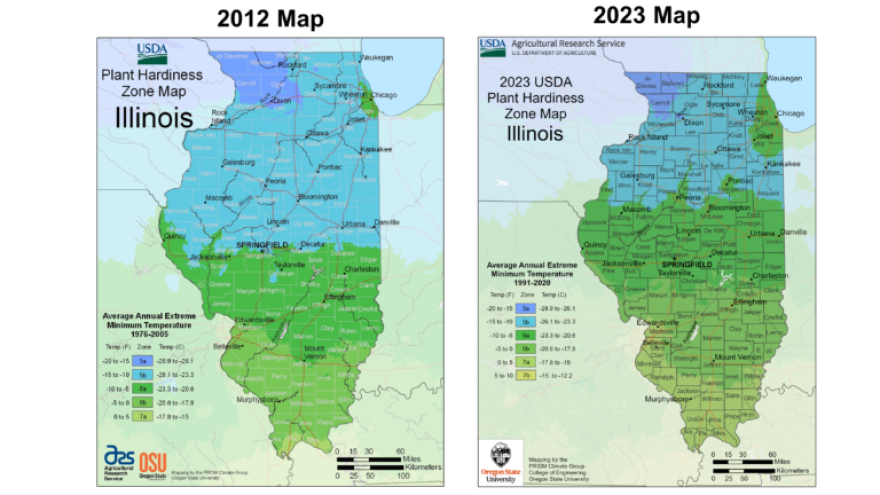Illinois winters aren't getting as cold as they used to. That's not just an anecdotal statement, but a measurable climate shift scientists are able to track and interpret.
The U.S. Department of Agriculture's Plant Hardiness Map divides the country into climate zones, based upon the average extreme minimum temperature over the past 30 years. Those zones are used to determine which plants may be able to grow and thrive in a region.
Back in 2012, most of Illinois north of Springfield was in zone 5b, where the average extreme minimum temperature is -15 to -10 degrees Fahrenheit. Just eleven years later, zone 6a (-5 to -10 degrees F) has shifted much further north, now covering much of the Tri-County area and even creeping up the Illinois River Valley into Marshall and Putnam counties.
Trent Ford is the Illinois State Climatologist. He said while the USDA's hardiness maps aren't solely an indicator of climate change, they are an important one.
"We certainly know that winters have gotten warmer across the state, and in central Illinois in particular. And so we see that example of the long-term change in our central Illinois climate in these hardiness maps," he said.
Theoretically, the warmer zone means plants that traditionally thrive in areas further south could have a better fighting chance in central Illinois. But Ford said it's not quite that simple.
"As we continue to see our winters warm, as the models tell us that we will, it really paints this complicated picture of we should be able to grow different types of crops that may not have been able to be grown 30, 40 years ago," Ford said. "But we may see some of those failures because of that variability."
For instance, he said the map suggests that certain strains of blackberries and blueberries that grow in areas that can grow in areas up to 6a might now look like a viable crop for the Springfield area on paper. But in 11 of the past 30 winters, the coldest days of winter dipped below that -10 degrees Fahrenheit threshold. That would lead to damaged crops about one out of every three years, he said.
"It can expand the range of the crops that we can grow. But because every winter is different, it may mean that certain plants may still not necessarily be viable in that climate," he said.
It's not just central Illinois that's seeing warmer winters. Ford notes for the first time, the subtropical zone 7b has appeared in a small slice of Illinois, in far southern Pulaski County. The 5 to 10 degree Fahrenheit average extreme minimum is more common in the southern U.S., which sees hotter summers and wetter weather year round.
Ford said ultimately, climate change is making winter "messier" for everyone — from farmers and gardeners to urban foresters and ecologists.
"It's a management challenge. It's certainly not something that is not solvable in any way. There are solutions, but it just becomes a management challenge for growers," he said.


